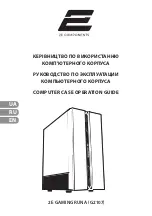
12
Color Temperature
Consistent and Constant
The problem:
With the rare exception of units costing many
thousands of dollars, flash lighting packs, up to now, do not control
the color temperature of the light. The color temperature typically
decreases by over 100 degrees Kelvin for every f-stop of power
reduction. Over a 6-stop adjustment range, this results in a color
temperature decrease of over 600K. Even units that have a small 3-
stop range can produce significant color shifts of over 300 degrees.
This can result in much larger shifts between two light sources than
film can correct. (Kodak recommends less than 200 degrees shift
between light sources for their 5500-degree daylight film.)
The solution:
Photogenic has created an affordable solution to this
problem. The new StudioMax III’s provides consistent and constant
color temperature across their 6-stop range. Be wary of claims of
consistent
color temperature at only one power level. This is not
the same as
constant-color
temperature over all power levels.
Both are necessary to provide the perfect exposure we all strive for.
The light produced by the new AKC’s is
consistent & constant
.
Every time you set a desired power level, you will receive the same
amount of light as you obtained previously, and at the same color
temperature. The light produced by the new StudioMax III is
constant-color. No matter what power setting you select, the light
will be the same color temperature. Using the standard color
corrected flash lamp; every subject will be exposed to approximately
5400 degree Kelvin light, regardless of power setting. This solves
forever the problem of unbalanced power settings in your studio,
resulting in color temperature shifts in your pictures.
Reciprocity Explained
-Excerpts taken from Kodak TECHNICAL PUBLICATION DATA I FILM E31-
July 2002
The reciprocity law states that the
intensity
of light falling on a
photographic film multiplied by the exposure
time
equals the total
amount of
exposure.
Intensity x Time
=
Exposure
This means, for example, that an exposure of
f
16 at 1/60 second is
equivalent to an exposure of
f
11 at 1/125 second. In either
combination of settings, the same total amount of light reaches the

































